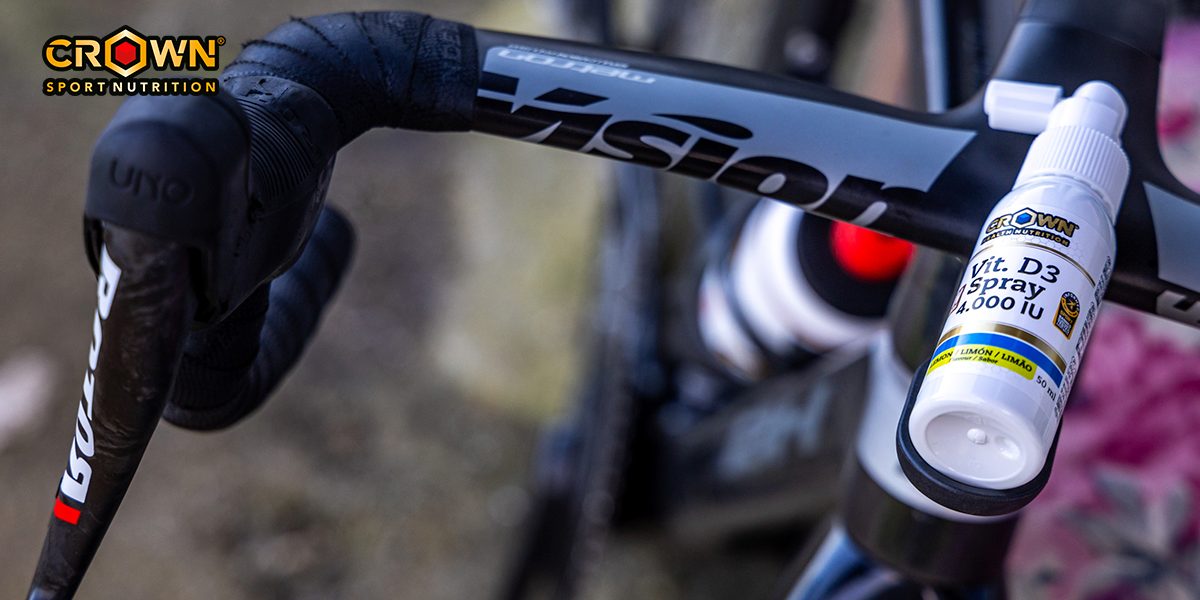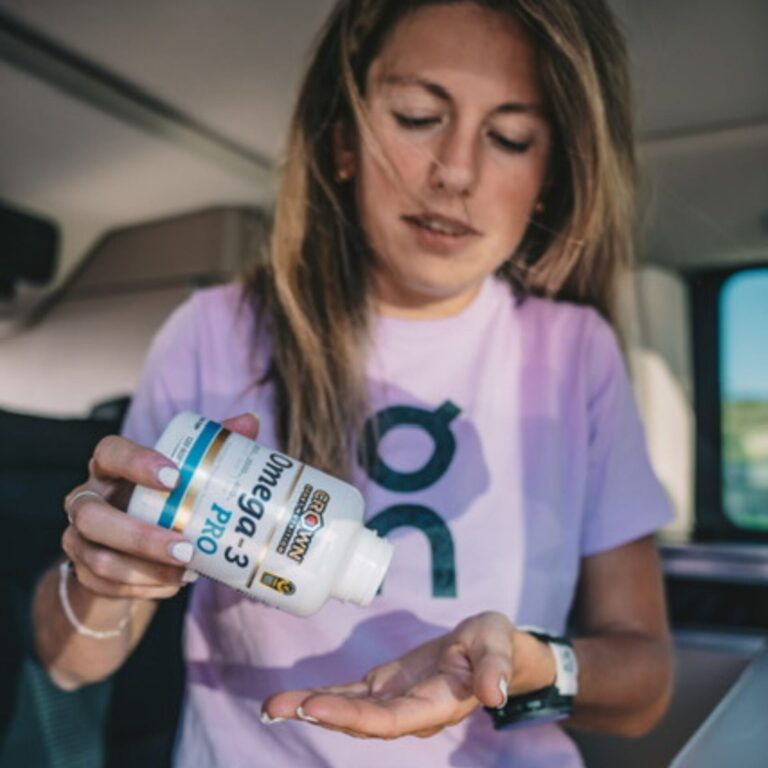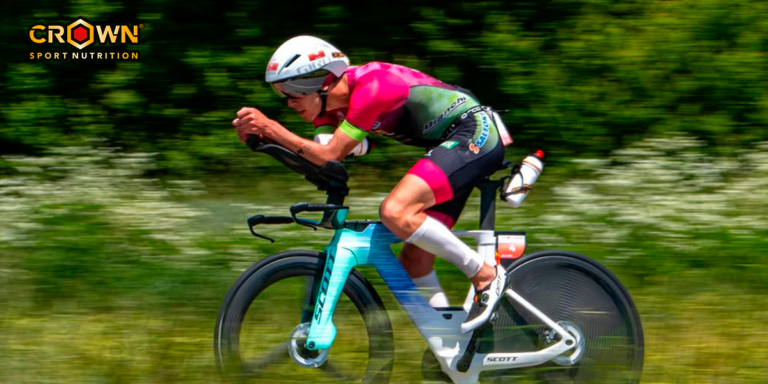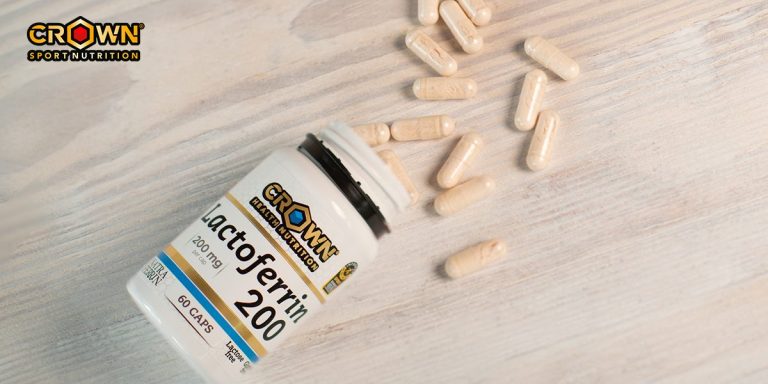Abstract
Vitamin D is a fat-soluble vitamin with steroid hormone–like properties. Sufficient
levels of vitamin D are essential to maintain whole-body homeostasis and well-being, whereas
vitamin D deficiency is associated with an increased prevalence of various diseases and a
higher incidence of injuries and bone fractures. The present short review summarises the most
relevant aspects of vitamin D metabolism, analyses the different dietary sources of vitamin D
(including supplements), and provides recommendations on vitamin D intake for both
sedentary and physically active individuals, including athletes. It also discusses when vitamin
D supplementation should be considered to achieve target vitamin D levels.
The available evidence indicates that oral vitamin D₃ supplementation can have a
notable impact on physical performance, particularly in individuals with deficient
(<50 nmol/L) or insufficient (50–75 nmol/L) serum 25(OH)D levels (the marker of vitamin D
serum concentration). Increasing vitamin D status to sufficient levels (75 to <125 nmol/L) in
the general population may support overall health, whereas raising vitamin D to optimal levels
(≥125 nmol/L) in athletes may optimise exercise performance.
Reports of vitamin D toxicity are rare. However, ingesting high doses of vitamin D over
many years can cause toxicity, defined by serum 25(OH)D levels exceeding 180 nmol/L
(72 ng/mL), leading to hypercalcemia. A daily intake of up to 10,000 IU is generally
considered a tolerable upper intake level.
Introduction
Vitamin D is nutritionally classified as a fat-soluble vitamin, acts like a steroid hormone
(via genomic and non-genomic mechanisms), and controls the function of many non-skeletal
tissues and cells, affecting human health and quality of life. Indeed, sufficient levels of vitamin
D are essential to maintain whole-body homeostasis and well-being as optimally as possible,
from fetal to old life (7), whereas vitamin D inadequacy is known to increase the prevalence of
numerous diseases (i.e., diabetes, cancer, autoimmune and cardiovascular pathologies),
including skeletal muscle diseases (3), the incidence of injuries, and bone fractures (14). The
widespread effect of vitamin D relies on the extensive presence of the vitamin D receptor
(VDR), which, although at variable concentrations, is expressed in all human tissues, including
skeletal muscles(6). Limited sunlight exposure of the skin and poor nutrition contribute, among
others, to the observed insufficient vitamin D level in athletes (15). Additionally, obesity with
deposition of vitamin D metabolites in the adipose tissue is a cause of vitamin D deficiency
(13) that has subsequently been linked to muscle weakness, myalgia, and impaired physical
performance (8).
Sources of Vitamin D, Metabolism and Levels in Humans
The main source of vitamin D for humans is ultraviolet-B (UV-B) (sunlight, contributing
80–90%) induced vitamin D synthesis from its precursor 7-dehydrocholesterol in the skin,
whereas natural food sources of vitamin D play a minor role in overall vitamin D supply
(providing 10 to 20%) (17). Two forms of vitamin D can be obtained from dietary sources:
vitamin D3 (cholecalciferol) and vitamin D2 (ergocalciferol). While vitamin D3 is found in food
from animal origin, such as cod-liver oil, salmon, and egg yolk, plus, fortified products, such
as, milk, cereal, and orange juice, vitamin D2 is present in some plants and fungi (10). While
these dietary sources may be meaningful, the process of absorbing dietary vitamin D is only
about 50% efficient; therefore, much of the nutrient value is lost in digestion (15). Therefore,
an appropriate intake of vitamin D, through dietary sources, ultraviolet B (UVB) exposure, and
maybe supplementation is necessary to obtain optimal serum vitamin D levels.
Vitamin D3 plays a critical role in bone metabolism and has important effects on muscle
function (8). Both forms (vitamin D3 and D2) are transformed to serum 25-hydroxyvitamin
[25(OH)D] in the liver and can be measured in blood samples. In the kidney, 25(OH)D is
further transformed into the biologically active compound calcitriol, also known as 1,25-
dihydroxyvitamin D3 (1,25(OH)2 D3) (7). Calcitriol stimulates intestinal absorption of calcium
and phosphate in the intestines and the generation of neogenesis bone tissue (9).
Even though the optimal levels of the vitamin D status from serum 25(OH)D still need
further discussion, within the sports context, the recommended optimal level of 25(OH)D is
~125 nmol/L (50 ng/mL) with no further benefits beyond this level (19). Even though this
relatively high level has been considered excessive for the general population (7), it is believed
that reaching such a 25(OH)D concentration is necessary to stimulate vitamin D storage in fat
and skeletal muscles (3) and consequently support exercise performance in athletes (17).
Overall, serum levels of 25(OH)D ≥ 75 −100 up to 125 nmol/L (≥ 30 − 40 up to 50 ng/mL),
even though not optimal for athletes, are considered sufficient for sedentary or less physically
active individuals (21). Whereas ~ 50 to <75 (20 to <30 ng/mL) are inadequate or insufficient.
On the other hand, serum 25(OH)D levels of < 50 nmol/L (<20 ng/mL) indicate vitamin D
deficiency (21). Indeed, levels below 10 nmol/L represent severe deficiency (14).
In trained individuals, maintaining adequate serum 25(OH)D levels can have a positive
impact on athletic performance, while insufficient vitamin D levels may limit exercise
adaptation and hinder optimal performance. Studies in animals suggest that the increased
1,25(OH)2D and the presence of VDR within muscle cells could conceivably impact the
efficiency of calcium binding during muscle fibber contractions and may potentially contribute
to the enlargement and multiplication of fast-twitch muscle fibbers (16, 22). Furthermore,
studies in vitro indicate stimulating effects of augmenting 1,25(OH)2D and intracellular VDR
on lipolysis within the tricarboxylic acid (TCA) cycle (2).
Athletes who live at latitudes > 35th parallel or who primarily train and compete indoors
are likely at higher risk for vitamin D insufficiency or even deficiency (21). Other factors and
lifestyle habits, such as dark complexion, high body fat content, undertaking training in the
early morning and evening when UVB levels are low, and aggressive blocking of UVB
exposure (clothing, equipment, and screening/blocking lotions), increase the risk for vitamin
D insufficiency and deficiency. Indeed, the recommended time range for sunlight exposure to
get sufficient ultraviolet (UV) radiation for vitamin synthesis seems to be 5–30 min between
10 a.m. and 4 p.m. (4).
Vitamin D Intake for Humans and Athletic Performance
It is estimated that the body requires 3000 – 5000 IU of vitamin D per day to meet the
needs of essentially every tissue and cell in the human body (11). The Endocrine Society
recommends a daily intake of 400–1000 IU of vitamin D for infants, 600–1000 for children (1–
18 years old), and 1500–2000 IU for adults, in addition to sensible sun exposure (12). However,
more is required if levels begin to drop to insufficient values (15). Intake recommendations
increase with age, pregnancy, and lactation. In addition, different supplementation protocols
have been recommended to support athletic performance and to reestablish the optimal levels
when appropriate. For instance, between 2000 IU to 200,000 IU (in patients with severe
deficiency) until the optimal 25(OH)D levels are met, followed by 1000 to 2000 IU per day for
maintenance, have been reported (15). In athletes experiencing low 25(OH)D serum levels
(< 75 nmol/L or < 30 ng/mL), the recommended vitamin D intake to achieve the desired serum level is 5000 IU per day for 8 weeks, followed by a daily maintenance intake of 1000 – 2000 IU (15). Nonetheless, it is worth noticing that only at 25(OH)D levels >100 to 125 nmol/L
(>40 to 50 ng/mL) does vitamin D begin to be stored in muscles and fat for future use (3).
Therefore, at levels < 125 nmol/L (50 ng/mL), the body mainly relies on a daily replenishment of vitamin D to satisfy its daily requirements, which is not likely to be present in the common diet. At levels between 75 and 100 up to 125 nmol/L, considered sufficient by most health associations (21), there appears to be just enough circulating 25(OH)D available for all of the immediate metabolic needs; however, stored vitamin D is not likely available for the advanced processes involved in the critical autocrine pathways, which is the pathway that is most likely to influence performance. Thus, even though from the clinical point of view, vitamin D levels are normal, they are still insufficient to support physical performance and exercise adaptation in athletes (17). it’s crucial to highlight that once serum concentrations of 25(OH)D reach adequate levels through supplementation, there are no noteworthy enhancements in muscular performance (9). Especially when participants start with levels of 25(OH)D > ~50 nmol/L (20
ng/L), no meaningful effects of vitamin D3 supplementation have been observed (8). It is worth
highlighting that maybe some of the randomized controlled trials (1) could have neglected nonstatistically significant changesthat may still impact athletic performance when the participants
start with insufficient 25(OH)D levels (50 to 75 nmol/L or 20 to 30 ng/L) and increase toward 75 to 125 nmol/L (>30 to 50 ng/L).
In summary, increasing vitamin D3 intake from diet, including supplements, may lie
more in preventing decline in muscle function and optimising training-induced adaptation
rather than continuously boosting physical performance.
Vitamin D Supplementation in Physically Active Individuals.
The primary commercial forms of vitamin D supplements are tablets, capsules, softgels, pills (can sometimes be used interchangeably with tablets or capsules), sprays (oral or
sublingual), and liquids-drops, chewable tablets, and gummies (usually contain a considerable
amount of sugar).
Vitamin D2 is less biologically active than vitamin D3. Therefore, vitamin D3 is the
most effective form of vitamin D to increase the total 25(OH)D concentration (14). Daily
effective doses of vitamin D3 range from 1000 IU up to 5000 IU (21). Current research
recommends a daily vitamin D3 supplementation with 2000 IU (50 μg) may be considered a
simple, effective, and safe dosage to prevent and treat vitamin D deficiency in the adult general
population (18). Athletes training indoors or at high latitudes in winter might aim for the higher
end of the range (2000 – 5000 IU daily) during those months. Additionally short-term trials (a
few weeks to 2 – 3 months) often show rapid improvements in muscular performance among
deficient individuals as their vitamin D status normalises, whereas longer-term trials sometimes
show no further gains. As previously mentioned, once vitamin D status is repleted, additional
supplementation provides no incremental benefit, and performance gains plateau, dictated by
the optimal adaptation to training and not limited by suboptimal nutrition (8).
For physically active individuals, a consistent supplementation (daily or weekly) is
generally recommended to maintain a stable vitamin D status throughout training cycles.
Vitamin D3 is best absorbed when taken with food, particularly a meal or snack containing
some fat (such as eggs, avocado, nuts, or dairy), which stimulates bile secretion and micelle
formation, and therefore facilitates vitamin D absorption (5). Indeed, because vitamin D is fatsoluble, and although many protocols recommend a daily intake, it does not need to be taken
every day. Large (> 5000 IU) doses could be ingested once a week; thus, the nutrient will be
stored and gradually used by the body. Consistency
Other aspects to consider are diet composition and ethnicity. Shortly, even though there
is no evidence that vegetarians metabolise vitamin D differently, some studies indicate that
vitamin D levels in vegans can be slightly lower if they do not take supplements (23). On the
other hand, it is worth considering that most recommendations are based on white individuals,
whereas recent investigations suggest that there may be much higher intakes required in
individuals from other ethnicities, and vitamin D requirements may also vary considerably
between different regions or continents, suggesting that some populations may require higher
doses than previously estimated (18)
To summarise, for healthy, physically active individuals, a sensible vitamin D3
supplementation protocol could be as follows, adjusted for diet and personal factors:
- Assess Status: It is highly recommended to measure serum 25(OH)D (especially at the
end of winter) to tailor dosage. - If levels are optimal (in athletes, 125 nmol/L, ≥50 ng/mL) or sufficient for the general
sedentary population (≥ 75 to nmol/L, 30 to 40 ng/L) a low maintenance dose (or even
just sensible sun exposure in summer) may suffice. For athletes showing less than 125
nmol/L, a dose between 3000 to 5000 IU for 8 weeks, followed by a maintenance
dose of 2000 IU would be appropriate. - For insufficiency (50 to 75 nmol/L, 20–30 ng/mL), consider ~2000–4000 (or 5000 in
athletes) IU daily for 8–12 weeks. - For deficiency (< 50 nmol/L, <20 ng/mL), consider ~7000 IU daily (~50,000 IU once
weekly) for 6–8 weeks (8). - Maintenance dose, after reaching the desired 25(OH)D concentration ~1000 –2000 IU
daily (omnivores may lean toward 1000; vegetarians often 2000 if no dietary intake).
Athletes in heavy training or with higher body mass may require 2000–5000 IU daily,
even for maintenance, particularly in winter (23). This can be given daily or
equivalently weekly (e.g., 7000 IU once weekly) (20).
Vitamin D Toxicity and Potential Side effects
The Institute of Medicine indicates that sparse data are available for upper 25(OH)D
levels, and values above 125 nmol/L in the general sedentary population or in excess of 375
nmol/L in athletes should raise concern among clinicians about potential adverse effects,
impacting kidney and other tissue damage (14). Vitamin D toxicity is very rare among the
athletic population. Ingesting high doses of vitamin D for years can cause vitamin D toxicity
(>180 nmol/L, 72 ng/mL) and hypercalcemia. Even though extended oral dosing studies
suggest that 10,000 IU per day is a tolerable upper-intake level without toxicity reported (19),
ingesting such a high constant dose for years could lead to a rebound negative effect reducing
1,25(OH)2D concentrations (17).
Conclusions
Oral vitamin D3 supplementation has a notable impact on physical performance,
predominantly in scenarios of vitamin D deficiency or insufficiency. High-quality evidence
indicates that bringing individuals’ vitamin D status up to sufficiency (for the general
population) or optimal levels (for athletes) may avoid suboptimal physical performance.
Briefly, a serum 25(OH)D concentration of 75 nmol/L (30 ng/mL) and below requires vitamin
D supplementation, and when the concentration is >75 to < 175 nmol/L (31–40 ng/L), in
physically active individuals, supplemental vitamin D strategies should be considered.
AUTHOR
Professor Fernando Naclerio
Centre for Exercise Activity and Rehabilitation
Institute for Lifecourse Development
School of Human Sciences
University of Greenwich
Contact email: f.j.naclerio@gre.ac.uk
References
- Beaudart, C, Buckinx, F, Rabenda, V, et al. The effects of vitamin d on skeletal muscle
strength, muscle mass, and muscle power: A systematic review and meta-analysis of
randomized controlled trials. J Clin Endocrinol Metab. 99: 4336–4345, 2014. - Chang, E and Kim, Y. Vitamin D decreases adipocyte lipid storage and increases
NAD-SIRT1 pathway in 3T3-L1 adipocytes. Nutrition 32: 702–708, 2016.Available
from: http://dx.doi.org/10.1016/j.nut.2015.12.032 - Chiang, C, Ismaeel, A, Griffis, RB, and Weems, S. Effects of vitamin D
supplementation on muscle strength in athletes: A systematic review. J Strength Cond
Res 31: 566–574, 2017. - Crescioli, C. Vitamin d restores skeletal muscle cell remodeling and myogenic
program: Potential impact on human health. Int J Mol Sci 22: 1–12, 2021. - Dawson-Hughes, B, Harris, SS, Lichtenstein, AH, et al. Dietary fat increases vitamin
d-3 absorption. J Acad Nutr Diet 115: 225–230, 2015.Available from:
http://dx.doi.org/10.1016/j.jand.2014.09.014 - Dzik, KP and Kaczor, JJ. Mechanisms of vitamin D on skeletal muscle function:
oxidative stress, energy metabolism and anabolic state. Eur J Appl Physiol 119: 825–
839, 2019.Available from: http://dx.doi.org/10.1007/s00421-019-04104-x - Farrokhyar, F, Sivakumar, G, Savage, K, et al. Effects of Vitamin D Supplementation
on Serum 25-Hydroxyvitamin D Concentrations and Physical Performance in Athletes:
A Systematic Review and Meta-analysis of Randomized Controlled Trials. Sports
Medicine 47: 2323–2339, 2017. - Gunton, JE and Girgis, CM. Vitamin D and muscle. Bone Rep 8: 163–167,
2018.Available from: https://doi.org/10.1016/j.bonr.2018.04.004 - Han, Q, Xiang, M, An, N, et al. Effects of vitamin D3 supplementation on strength of
lower and upper extremities in athletes: an updated systematic review and metaanalysis of randomized controlled trials. Front Nutr 11: 1–15, 2024. - He, CS, Fraser, WD, Tang, J, et al. The effect of 14 weeks of vitamin D3
supplementation on antimicrobial peptides and proteins in athletes. J Sports Sci 34:
67–74, 2016.Available from: http://dx.doi.org/10.1080/02640414.2015.1033642 - Holick, MF. The vitamin D epidemic and its health consequences. J Nutr 135, 2005.
- Holick, MF, Binkley, NC, Bischoff-Ferrari, HA, et al. Evaluation, treatment, and
prevention of vitamin D deficiency: An endocrine society clinical practice guideline. J
Clin Endocrinol Metab. 96: 1911–1930, 2011. - Hyppönen, E and Boucher, BJ. Adiposity, Vitamin D requirements, and clinical
implications for obesity-related metabolic abnormalities. Nutr Rev 76: 678–692, 2018. - Moran, DS, McClung, JP, Kohen, T, and Lieberman, HR. Vitamin D and physical
performance. Sports Med. 43: 601–611, 2013. - Ogan, D and Pritchett, K. Vitamin D and the athlete: Risks, recommendations, and
benefits. Nutrients 5: 1856–1868, 2013. - Oku, Y, Tanabe, R, Nakaoka, K, et al. Influences of dietary vitamin D restriction on
bone strength, body composition and muscle in rats fed a high-fat diet: Involvement of
mRNA expression of MyoD in skeletal muscle. J Nutr Biochem. 32: 85–90,
2016.Available from: http://dx.doi.org/10.1016/j.jnutbio.2016.01.013 - Owens, DJ, Allison, R, and Close, GL. Vitamin D and the Athlete: Current
Perspectives and New Challenges. Sports Medicine 48: 3–16, 2018.Available from:
https://doi.org/10.1007/s40279-017-0841-9 - Pludowski, P, Grant, WB, Karras, SN, Zittermann, A, and Pilz, S. Vitamin D
Supplementation: A Review of the Evidence Arguing for a Daily Dose of 2000
International Units (50 µg) of Vitamin D for Adults in the General Population.
Nutrients 16, 2024. - Shuler, FD, Wingate, MK, Moore, GH, and Giangarra, C. Sports Health Benefits of
Vitamin D. Sports Health 4: 496–501, 2012. - Takács, I, Tóth, BE, Szekeres, L, et al. Randomized clinical trial to comparing efficacy
of daily, weekly and monthly administration of vitamin D3. Endocrine 55: 60–65,
2017.Available from: http://dx.doi.org/10.1007/s12020-016-1137-9 - Thomas, T, Erdman, KA, and Burke, LM. American College of Sports Medicine Joint
Position Statement: Nutrition and athletic performance. Med Sci Sports Exerc 48: 543–
68, 2016. - Trovato, FM, Castrogiovanni, P, Szychlinska, MA, Purrello, F, and Musumeci, G.
Impact of western and mediterranean diets and vitamin D on muscle fibers of
sedentary rats. Nutrients 10: 1–15, 2018. - Yoon, S, Kwon, O, and Kim, J. Vitamin D in athletes: focus on physical performance
and musculoskeletal injuries. Phys Act Nutr 25: 20–25, 2021.








